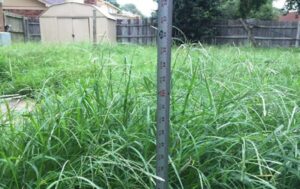
Banana trees are renowned for their ability to produce large bunches of delicious fruit. Understanding how many bananas grow on a tree can provide valuable insights into banana cultivation and productivity. In this article, we will delve into the intricacies of banana tree fruit production, exploring the flowering process, fruit development stages, factors influencing fruit yield, variability in production, and strategies for maximizing yield.
I. Introduction to Banana Trees
Overview of Banana Tree Growth Banana trees, scientifically classified as members of the genus Musa, are tropical plants known for their large, herbaceous leaves and fruit-bearing stems called pseudostems. These fast-growing trees require warm temperatures, ample sunlight, and well-drained soil to thrive.
Importance of Understanding Banana Tree Fruit Production Understanding banana tree fruit production is crucial for banana growers and enthusiasts alike. By grasping the factors influencing fruit yield, growers can optimize cultivation practices to enhance productivity and maximize harvests.
Factors Affecting Banana Yield Several factors influence banana tree fruit yield, including environmental conditions, cultivation practices, and banana cultivar characteristics. By addressing these factors, growers can improve yield and ensure a consistent supply of high-quality bananas.
II. Banana Flowering and Fruit Development
Flowering Stage Banana trees undergo a unique flowering process characterized by the emergence of an inflorescence known as the banana heart or banana flower. This flower plays a pivotal role in fruit production as it gives rise to banana bunches.
Description of Banana Flower Structure The banana flower consists of multiple bracts arranged in concentric layers, with female flowers located at the base and male flowers towards the tip. The intricate structure of the flower facilitates pollination and fruit development.
Pollination Process Banana flowers are typically pollinated by insects such as bees, which transfer pollen from male to female flowers. However, in cultivated banana varieties, artificial pollination methods may be employed to ensure successful fruit set.
Fruit Development Stage Following pollination, the banana fruit begins to develop. The ovary of the female flower swells and elongates, eventually forming a cylindrical structure known as the banana finger. As the fruit matures, it undergoes changes in color, texture, and flavor.
Formation of Banana Bunches Banana fingers grow in clusters known as banana bunches, with each bunch containing multiple hands of bananas. The number of bananas per bunch varies depending on factors such as banana cultivar, growing conditions, and agricultural practices.
Maturation Process Bananas ripen gradually after harvest, transitioning from green to yellow as they mature. Ripening is influenced by factors such as temperature, humidity, and ethylene gas production. Proper handling and storage are essential to ensure uniform ripening and optimal fruit quality.
III. Banana Tree Fruit Yield
Typical Number of Bananas per Bunch The number of bananas per bunch can vary widely depending on the banana cultivar and growing conditions. While some varieties produce smaller bunches with fewer bananas, others yield larger bunches with a higher banana count.
Variability in Bunch Size Bunch size can also vary within the same banana cultivar due to factors such as genetic diversity, plant nutrition, and fruit thinning practices. Growers may employ strategies to enhance bunch size and increase overall yield.
Factors Influencing Bunch Yield Several factors influence banana bunch yield, including plant age, health, and vigor, as well as environmental conditions such as temperature, rainfall, and sunlight exposure. Proper management practices can help mitigate yield-limiting factors and optimize productivity.
Average Number of Bunches per Banana Tree The average number of bunches per banana tree depends on factors such as plant spacing, crop management practices, and tree health. High-density planting and intensive management can increase the number of bunches per tree, thereby enhancing overall yield.
Determinants of Tree Productivity Tree productivity is influenced by genetic factors, environmental conditions, and cultural practices. Selecting high-yielding banana cultivars, providing optimal growing conditions, and implementing effective crop management techniques are essential for maximizing tree productivity.
IV. Variability in Banana Tree Fruit Production
Influence of Banana Cultivar Different banana cultivars exhibit varying levels of fruit production, with some varieties known for their high yield potential and others valued for unique fruit characteristics. Growers may select cultivars based on desired traits such as yield, flavor, and disease resistance.
Varieties with Different Yield Characteristics Some banana varieties are bred specifically for high yield, while others prioritize traits such as disease resistance, fruit size, or flavor. Understanding the yield characteristics of different cultivars can help growers make informed decisions when selecting varieties for cultivation.
Factors to Consider When Selecting Banana Varieties When choosing banana varieties for cultivation, growers should consider factors such as local climate, soil conditions, market demand, and intended use of the fruit. Selecting well-adapted cultivars with desirable traits can enhance overall production and profitability.
Environmental Factors Environmental factors such as temperature, humidity, rainfall, and soil fertility play a significant role in banana tree fruit production. By optimizing growing conditions and mitigating environmental stressors, growers can improve fruit yield and quality.
Climate and Weather Conditions Banana trees thrive in warm, tropical climates with abundant sunlight and moderate rainfall. Extreme temperatures, drought, excessive rainfall, or high winds can adversely affect banana tree growth and fruit production, leading to reduced yields or crop losses.
Soil Quality and Fertility Healthy soil is essential for robust banana tree growth and fruit production. Soil fertility, pH levels, drainage, and nutrient availability all influence plant health and productivity. Regular soil testing and appropriate fertilization practices can help maintain optimal soil conditions for banana cultivation.
V. Maximizing Banana Tree Fruit Yield
Optimal Growing Conditions Providing optimal growing conditions is crucial for maximizing banana tree fruit yield. This includes ensuring sufficient sunlight, water, and nutrients, as well as maintaining proper soil drainage and fertility.
Sunlight Exposure and Temperature Range Banana trees require full sun exposure to thrive, with a minimum of six to eight hours of direct sunlight per day. They also prefer warm temperatures ranging from 75°F to 95°F, although they can tolerate slightly cooler or warmer conditions.
Soil Moisture and Drainage Banana trees require consistently moist soil with good drainage to support healthy growth and fruit production. Irrigation management is essential to ensure adequate soil moisture levels while preventing waterlogging or drought stress.
Proper Care and Maintenance Regular care and maintenance practices are essential for maximizing banana tree fruit yield. This includes fertilization, pest and disease management, pruning, and weed control.
Fertilization and Nutrient Management Banana trees have high nutrient requirements and benefit from regular fertilization with balanced fertilizers containing nitrogen, phosphorus, potassium, and micronutrients. Soil testing can help determine nutrient deficiencies and guide fertilization practices.
Pest and Disease Control Measures Implementing effective pest and disease control measures is crucial for protecting banana trees from damage and maximizing fruit yield. Integrated pest management (IPM) strategies, cultural practices, and biological controls can help minimize pest and disease pressure while reducing reliance on chemical pesticides.
In conclusion, banana trees have the potential to produce abundant yields of delicious fruit under optimal growing conditions. By understanding the factors influencing banana tree fruit production and implementing appropriate management practices, growers can maximize yield and ensure a bountiful harvest of bananas.






